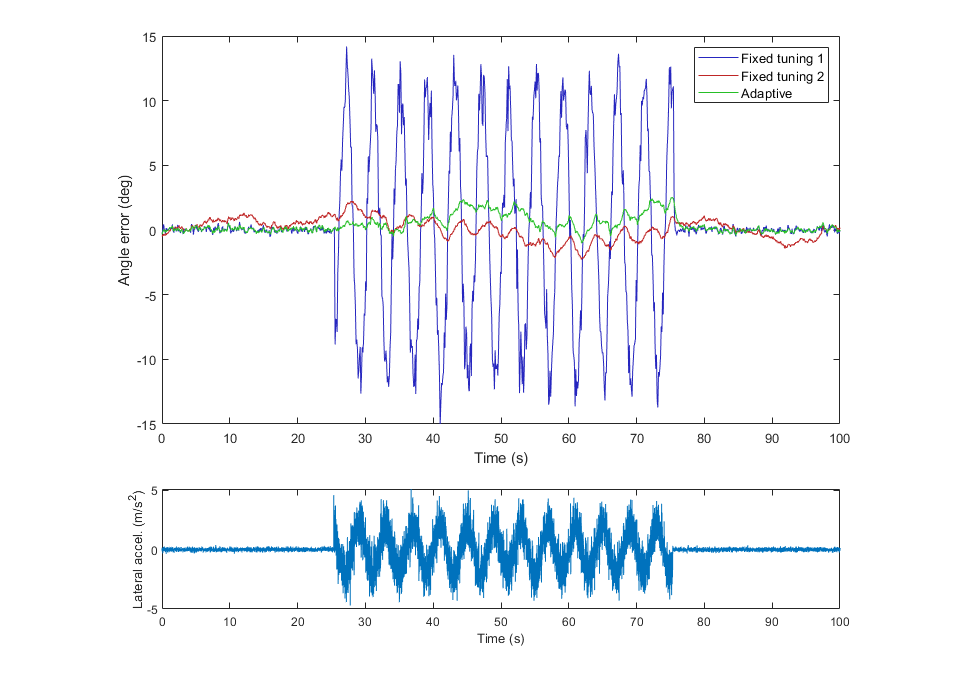Adaptive Filtering
This section provides a brief introduction to the adaptive estimation filter used by 3DM-CV7.
The purpose of the estimation filter is to combine measurements from the angular rate sensors (gyros) and the accelerometers with dynamic constraints, and possibly magnetic or other heading measurements, to give an accurate estimate of sensor pitch, roll, and heading. Other useful state estimates are tracked as well, such as accelerometer and gyro bias.
An attitude estimate is produced by tracking the gyro outputs integrated over time, and correcting the integration error with angular estimates of the sensor with respect to the gravity vector as sensed by the accelerometers. These corrections are essential, because by integrating over time, any error source on the gyro measurement - such as residual bias, scale-factor error, and random noise - will increase the angular error in an unbounded way. A properly tuned estimation filter will carefully balance the contributions of these complementary sensor components to minimize the overall error in angular estimates. If too much emphasis is given to the gyros, there will be large errors at low frequencies from the build up of integration error. On the other hand, if too much weight is given to the accelerometers, errors due to linear acceleration of the sensor platform and vibration will degrade the estimate.

The estimation filter employed by 3DM-CV7 is an adaptive Kalman filter, which uses statistical models to characterize sensor and dynamic modeling errors. The sensor measurements, and other constraints, are combined in a way that minimizes the expected error in the filter output. A standard Kalman filter uses fixed parameters to model these random processes, meaning that if background conditions change (for example, vibration suddenly increases), a standard Kalman filter may be providing a solution that is far from optimal. In many cases, it is not practical or convenient for a user to manually tune the filter for different applications, operating regimes, or dynamic conditions. For this reason, [the sensor] uses adaptive Kalman filtering, an approach where the statistical models are updated continuously in real time to maintain consistency between modeled and actual measurements.
On the 3DM-CV7, users can control two parameters which influence the adaptive filtering. The first parameter is the adaptive filtering level, which controls how aggressively the filter will adjust its statistical models in response to inconsistent measurements. The second is the adaptive filtering time constant, which controls how quickly the filter will adapt. See Adaptive Options (0x0D,0x53) for more information on changing these parameters.